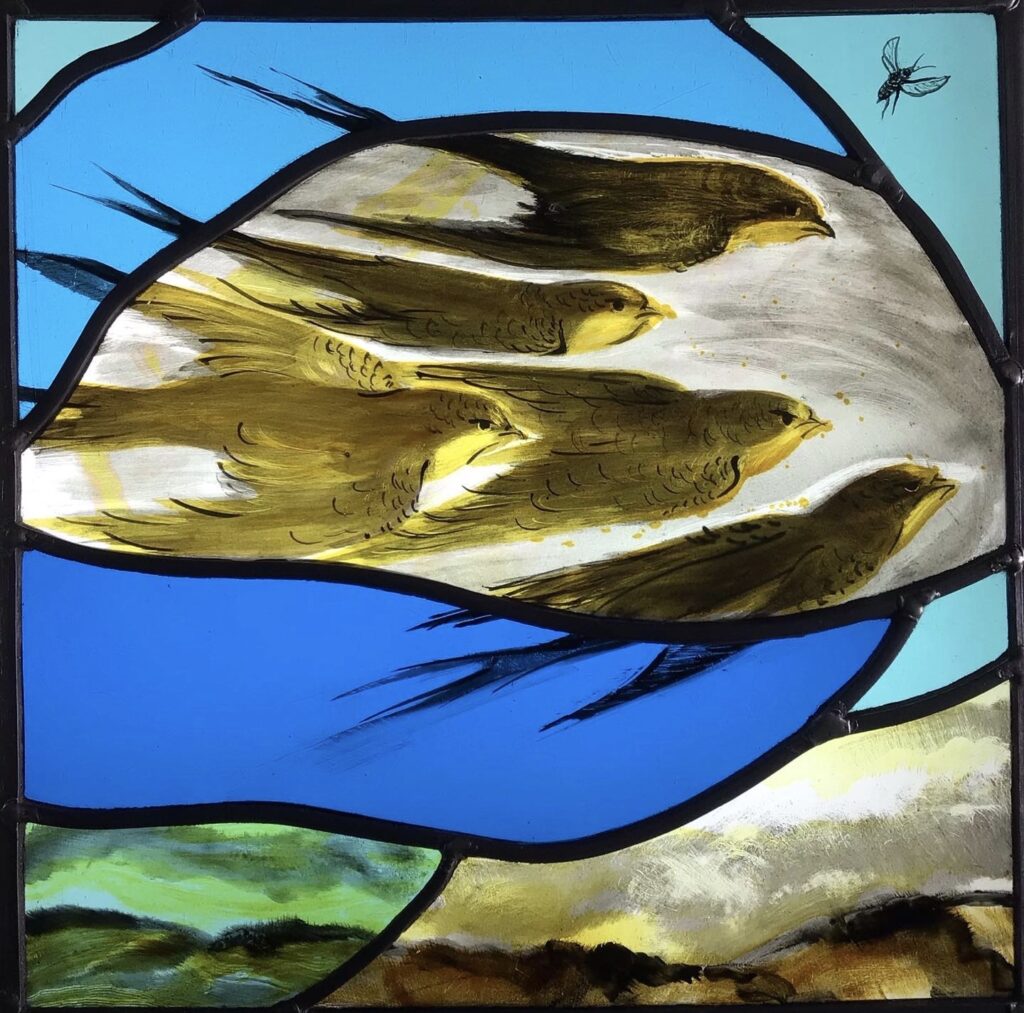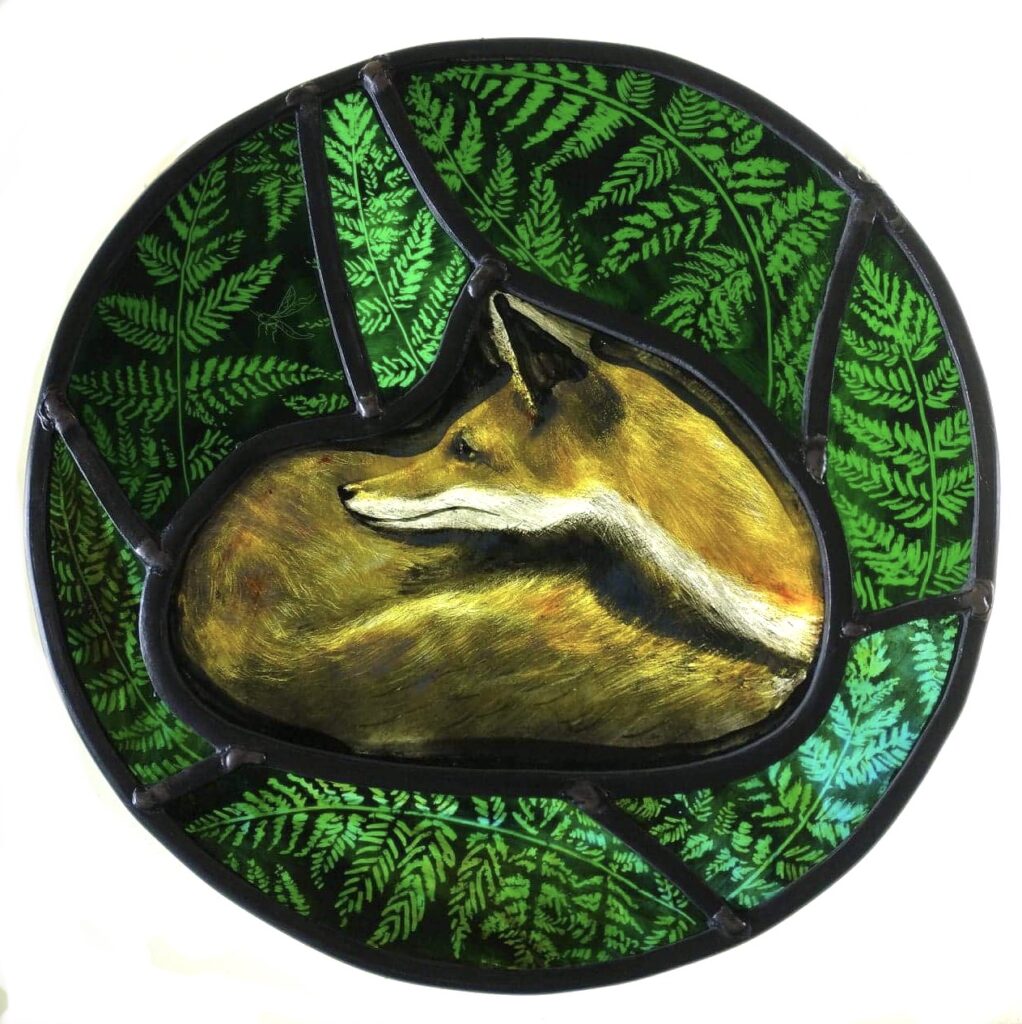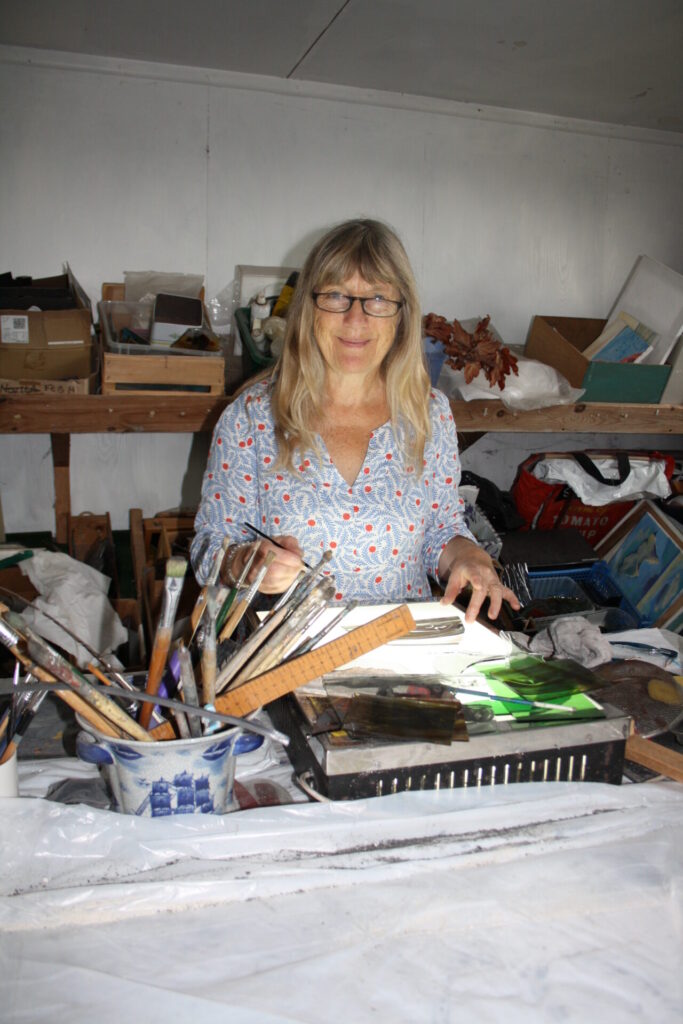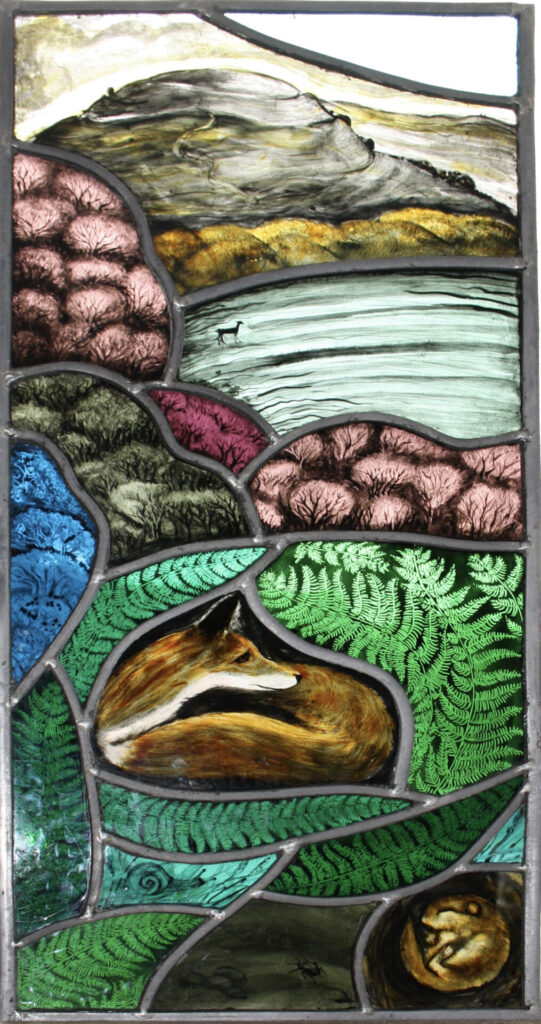Ancient craftsmanship: Edwina Baines discovers that the modern world of stained glass art is much the same as it was
Coloured glass was used for art and decoration in the ancient world by both Egyptians and Romans – and the techniques and materials used in making stained glass windows have changed little since the Middle Ages. Dorset artist Gillian McCormick’s love of the craft was born out of an interest in medieval art. The atmosphere, mystery and otherworldliness of the stained glass she saw in the cathedrals of St Mary’s and St Giles while studying painting at Edinburgh’s College of Art encouraged her to learn more. The essential tools – a glass cutter, grozing pliers for breaking and shaping the glass and a soldering iron – weren’t hard to collect, and Gillian started her stained glass journey by following her initial art degree with decorative glass courses in Bath and Glasgow, learning the skills of painting, staining, acid etching and fusing.
An ancient process
From her home in Edmondsham, Gillian walks the mile through the woods every day to her farmyard studio. The first step in making a stained glass panel is the design or ‘cartoon’. After selecting the glass, this cartoon becomes the guide for cutting the individual pieces, which are eventually assembled using specially-made lead came (or calm) which, when soldered at the joints, holds the piece together. The gaps between the lead and the glass are then filled with a black lead cement.
It’s a messy process, but once it hardens, the cement strengthens the finished panel.
The glass paints themselves consist of ground metal oxides in shades of brown and black, which are mixed with water and a small amount of Gum Arabic before being painted onto the glass and fired in the kiln to approximately 600ºC, fusing the paint to the glass. The paint modulates the light coming through the glass to create the desired effect. Matt shading can be scratched into with sticks and needles, or gently lifted with brushes till the image emerges. The process could be described as painting with light.
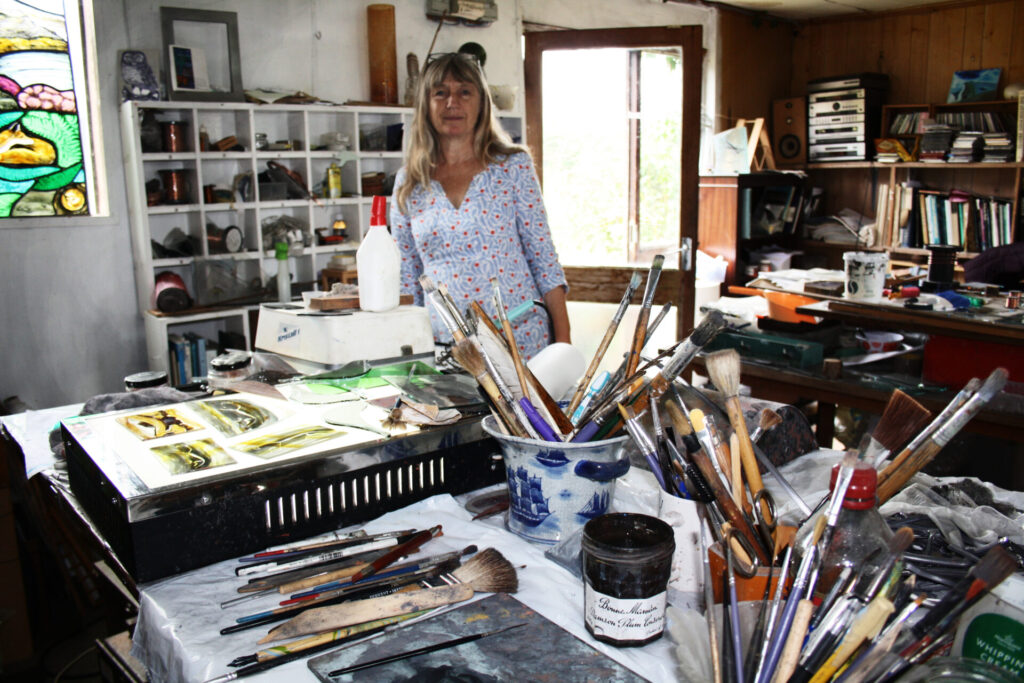
Image: Edwina Baines
Several layers can be built up and fired, finishing with the addition of the silver stain, fired at a lower temperature to produce a range of yellows. This stain, made up of silver compounds that migrate into the glass and colour the glass itself, is where the term ‘stained glass’ is derived.
Gillian places each segment of glass onto a lightbox to see how the image is progressing. It is necessary to paint in reverse – and therefore to constantly turn the piece over to keep track of progress. Each piece can be fired up to four times.
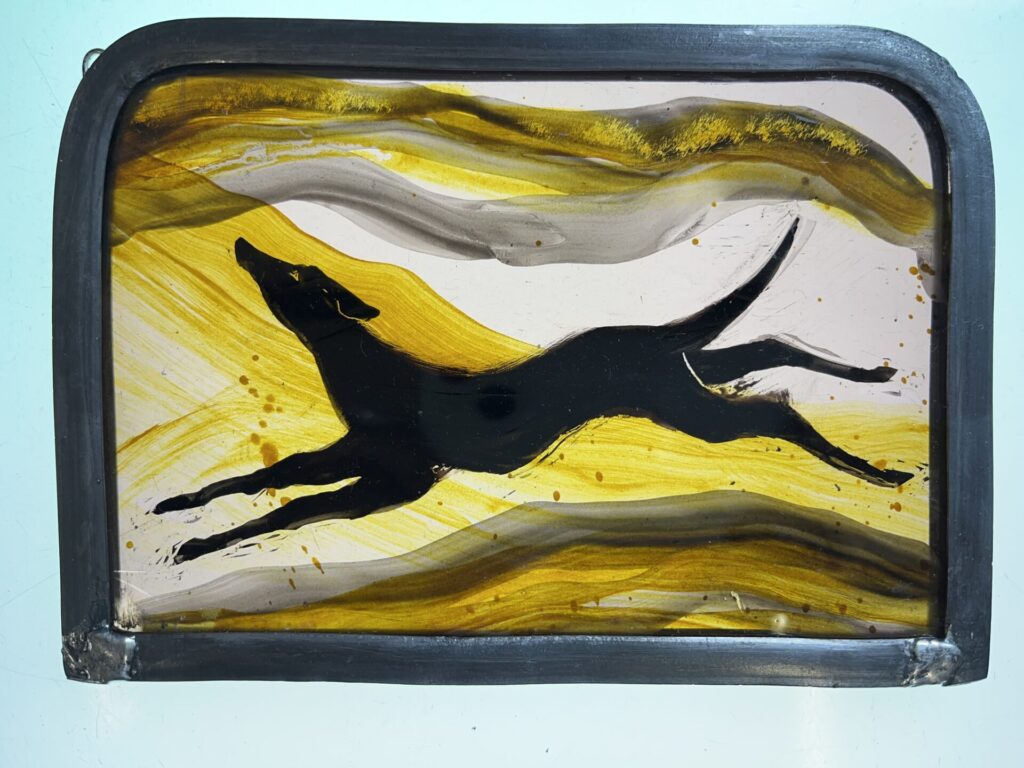
Image © Gillian McCormick
After acquiring a small pottery test kiln, Gillian continued to develop her knowledge and skill in glass painting, eventually buying a glass kiln which allowed her to experiment with glass fusing. This kiln can be controlled to go up to the higher temperatures needed to fuse glass – approximately 800ºC – and even more importantly to cool down in stages, allowing the glass to anneal (cool slowly), which prevents glass cracking in the finished piece.
Glass fusion
As well as individual pieces and commissions for stained glass panels, Gillian also produces pieces of colourful and expressive fused glass. The glass used in fusing must all be compatible, heating and cooling at the same rate.
‘Glass fusing can be a freer, more flexible way of working,’ she says. ‘With the traditional leaded glass, precision is more important.’
The process starts with a base layer, which can have glass paint applied before layers of coloured glass are carefully arranged on top. Gillian sometimes uses several layers of colour, which can produce subtle colour changes, reminiscent of watercolour painting. The panel can be refired if adjustments are necessary. Glass powders or frits (ultra-small particles of ground-up glass) can also be added to create variation.
The countryside around Edmondsham and the encounters Gillian has with the local wildlife provide a constant source of inspiration.
‘A deer leaping through the woods, a badger emerging from the ferns or foxes skulking along the hedgerows, these are moments of enchantment among the seasonal changes in the landscape.’
Gillian has also enjoyed the opportunity to experiment with acid etching – using hydrofluoric acid to remove a layer of coloured glass from a piece of flashed glass (clear glass with a thin layer of coloured glass). This produces lots of creative possibilities when combined with paint but isn’t a technique she has been able to follow up due to the hazards involved in using the acid. She also works as part of a team carrying out repairs on stained glass windows in churches, painting replacement pieces for the broken windows.
Gillian participates in Dorset Art Weeks, the Wylye Valley art trail and more recently the Child Okeford art trail. She will be taking part in the Springhead Garden of Delights exhibition at the start of December and will have work in Chalks Gallery in Lymington in their Forest and Folklore winter exhibition. She also welcomes commissions.
Gillian McCormick_ Glass
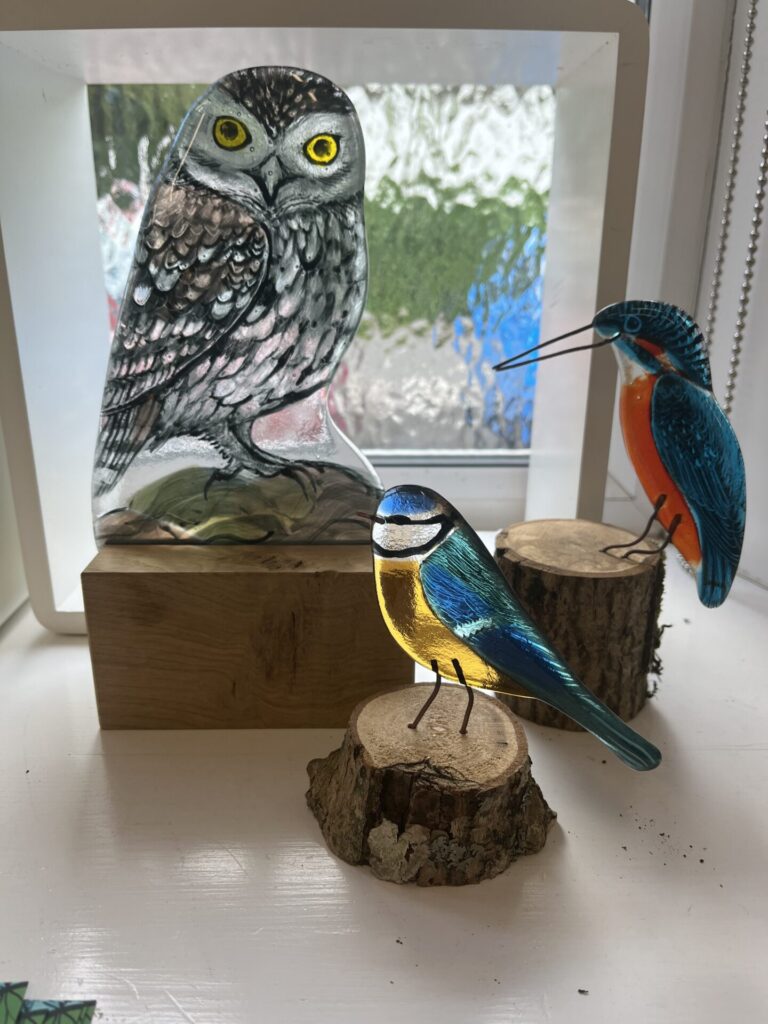
Image: Edwina Baines
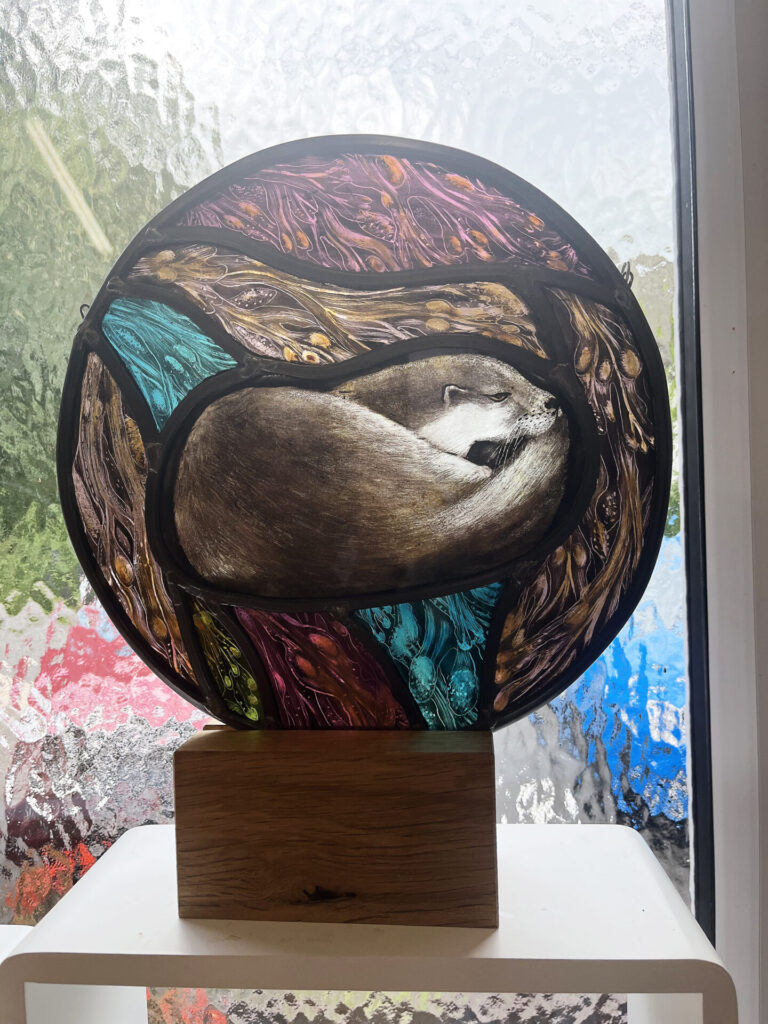
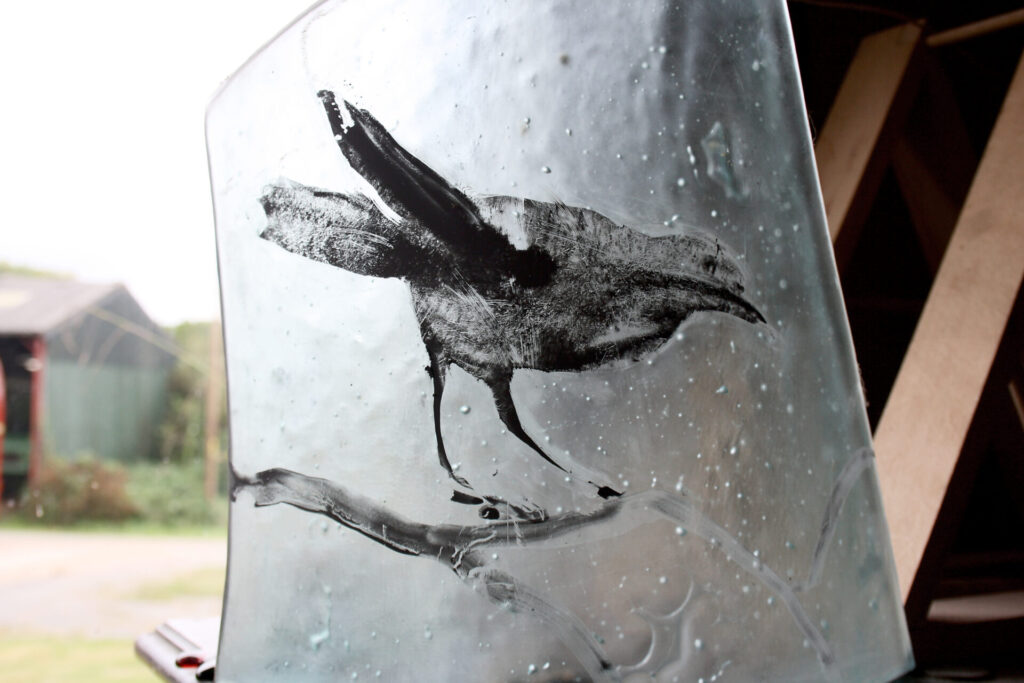
Stained glass is on the endangered list of heritage crafts. The British Society of Master Glass Painters aims to encourage the continuity of the discipline and is open to anyone interested in stained glass




